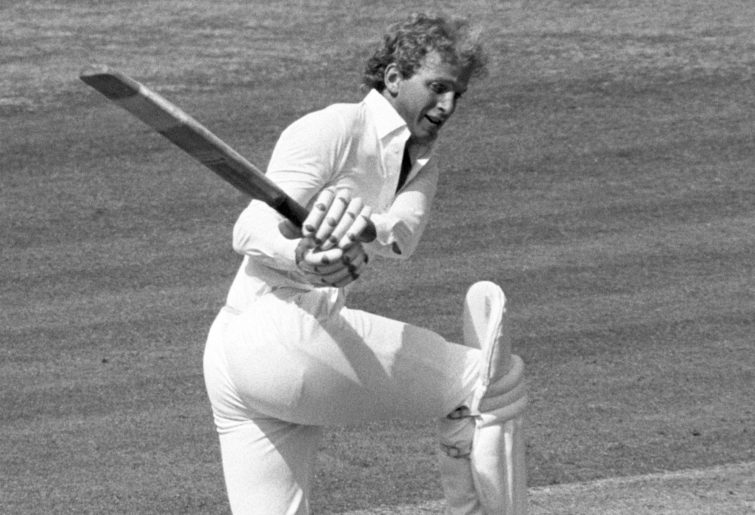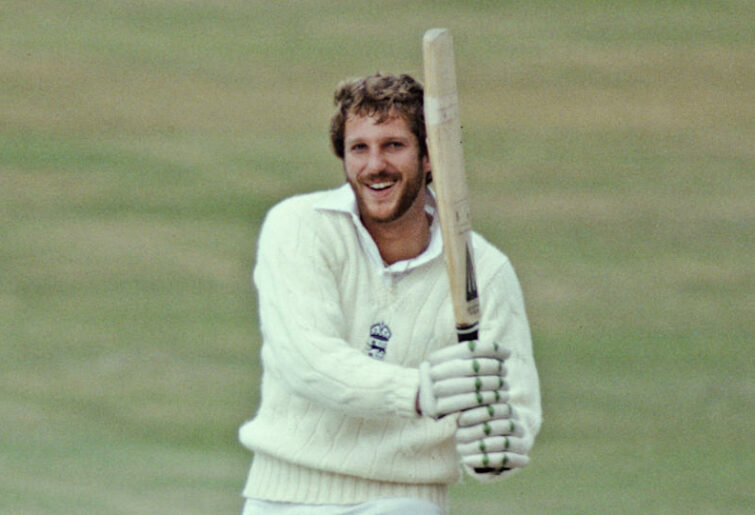With the Ashes excitement soon to build and the absorbing series between India and England underway, I thought it was timely to look into the rear vision mirror and come up with the best England side of the last 50 years, in a similar manner to my article on Indian and Australian sides of the last half century.
For the opening positions, I chose the right and left handed combination and contrasting styles of Michael Vaughan (5719 runs at 41.4 average) and Alastair Cook, England’s highest ever run scorer in Test cricket (12,472 runs at 45.4 average).
Although Vaughan moved up and down the order, his initial forays in Test cricket were right at the top of the order. His strong back-foot play and all around stroke play earned him the nod.
Accompanying Vaughan would be the doughty Alastair Cook, the perfect foil with his nudges and deflections, patience in abundance and immense playing record.
Vaughan narrowly beat Graham Gooch (8900 runs at 42.6) for the opening slot, mainly due to the fact that I have appointed him captain. Vaughan’s captaincy in the historic 2005 come-from-behind Ashes series victory was a key part of that success.
Briefly, I was tempted to include another Yorkie, Geoffrey Boycott (8114 runs at 47.7), as the opener along with Cook. However, even in this fantasy team, I would not want to inflict that pair on spectators.
At number three I have David Gower (8231 runs at 44.3), who is the pre-eminent English batsman of the last 50 years.

(Photo by PA Images via Getty Images)
From the moment he imperiously and elegantly dispatched his first ball in Test cricket to the fence, Gower’s sublime skills and artistry were to the fore, against all types of bowling, including legends of West Indian and Australian cricket.
While he was not perhaps a specialist number three, Gower played there often enough to earn the position. Although Gower looked laconic, no one makes that many runs without a fiercely competitive underbelly.
For the number four position, I opt for Joe Root (to date 8546 runs at 49.97). His recent rich vein of form in the sub-continent sealed the deal, transforming him from a player making nice half centuries to a formidable run machine alongside peers Steve Smith, Virat Kohli and Kane Williamson.
At number five is the controversial, irascible and divisive Kevin Pietersen (8181 runs at 47.3). For all that, boy could he play. Intimidating to bowlers, Pietersen helped immensely to wrest the Ashes back from Australia in his maiden Test series in 2005, with the match-defining 158 – his first Test hundred – at the Oval. He was certainly no one innings wonder.
Commiserations to specialist batsmen Graham Gooch, Geoff Boycott, Allan Lamb, Andrew Strauss, Mike Gatting, Derek Randall and Nasser Hussain.
My next two spots in the order are all-rounders. In this arena, I have plumped for Ben Stokes (to date batting 4543 runs at 37.5 and bowling 159 wickets 31.5 average) and Ian Botham (batting 5200 runs at 33.5 and bowling 383 wickets at 28.4), the former arguably more of a batting all-rounder and the latter a bowling all-rounder.

(Photo by Adrian Murrell/Allsport/Getty Images/Hulton Archive)
Whatever their distinctive strengths, they have been match winners. The incredible knock by Stokes in the 2019 Ashes series to win the game for England and the mercurial innings by Botham in the 1981 Botham Ashes series live in the memory.
Single-handedly turning matches on their heads has been a hallmark of these two. Who could forget Botham teeing off at Leeds for 149 not out after following on, eventually setting Australia a small target of 130, which the shell shocked visitors could not achieve?
Given the lack of extreme firepower in English cricket, I opted for the two all-rounders. Commiserations to Tony Greig and Andrew Flintoff
At number eight and for the wicketkeeping position, I select Allan Knott (250 catches and 19 stumpings). A craftsman with the gloves, and a fighting, tenacious batsman, Allan Knott fits the bill perfectly.
While some have suggested that he was not as technically pure behind the stumps as Bob Taylor, Knott’s all round attributes ensure selection. Commiseration to Bob Taylor and Jack Russell.
For the specialist pace bowling, I opt for Bob Willis (325 wickets at bowling average of 25.2) and James Anderson (611 wickets at 26.5), the latter England’s highest Test wicket taker and fourth all time highest in the world.
For some reason, Bob Willis and the term workhorse have become synonymous. Yet Willis was far from a plodder. He was hostile, accurate and incisive. Who could forget his mesmerising spell, eyes bulging in almost demonic fashion, in bowling unchanged to hand England a most unlikely victory in the 1981 Ashes series, with a haul of 8-43?
Jimmy Anderson gets my final specialist pace spot.

(Ryan Pierse/Getty Images)
While I am not completely sold on him, as he needs favourable conditions compared to most great pace bowlers, I cannot overlook the sheer volume of wickets, his longevity and complete professionalism. When the conditions are right, he is virtually unplayable.
I gave some consideration to John Snow but his best may have come in the earlier decade, although I cannot deny his performance in the 1970-71 Ashes Test series. Commiserations to John Snow, Darren Gough, Steve Harmison and Stuart Broad.
For the spin bowling spot, I opt for “Deadly” Derek Underwood. With 297 wickets at an average of 25.8 and a best of 8-51, he was particularly lethal on rain-affected pitches but also proficient on other surfaces.
Commiserations to Graeme Swann and John Emburey.
In selecting this team of the half century, what is evident is the lack of absolute gilt-edge bowling prowess and therefore choices. This could partly be associated with the grind of county cricket, the exaggerated impact of favourable conditions at home not replicated elsewhere, and the revolving-door selection policy not giving enough continuity for bowlers (and batsmen).
Second, while England has produced many fine batsmen over the last 50 years with averages of more than 40, it is instructive that no-one has reached the stellar heights of the likes of Brian Lara (52.9) and Sachin Tendulkar (53.8) over an entire career. However, in fairness Joe Root is closing in on this elite milestone.
Thirdly, I suspect that notwithstanding the shellacking in the second Test in India, English cricket is on the rise. There appears to be some fine emerging talent, for example the two Olivers, Pope and Stone.
































































































